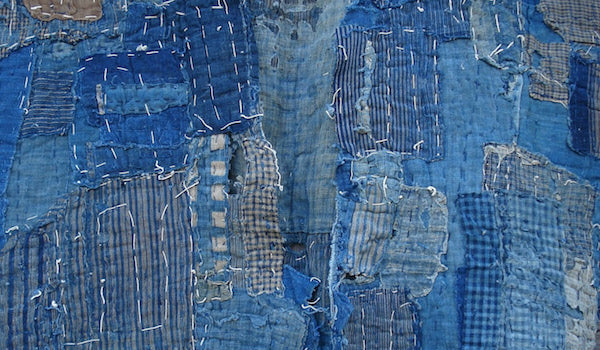
Threadbare

In the late 1800s, Japanese city dwellers enjoyed improved prosperity and began to embrace Western style clothes. Many domestic, cotton mills produced abundant fabric for tailoring their newly discovered garments. On the other hand, farmer’s wives were too impoverished to purchase these commercially made fabrics. These women continued to spin cotton fibres into yarn, hand-weaving it into fabric.

The resulting cloth fashioned clothing and household textiles for themselves and their families. The Japanese called it ‘noragi’. Jackets, vests, along with momohiki and monpe pants were the most common types of noragi garments. This home-based sewing tradition was passed down from mother to daughter, from each generation to the next, and was part of the basic homemaking repertoire of every Japanese farm wife.

The rural Japanese preferred indigo blue to dye their textiles, feeling that the indigo colour reflected the beautiful azure hue of the oceans surrounding the Japanese archipelago. To help matters, Japanese indigo plants grew wild and were plentiful throughout the country. In addition, the dye retained the blue colour in cotton fabric after many years of use, gradually fading into beautiful shades of lighter blue…
You can read this article by Jim Austin in full in the current issue of Selvedge.
To find out more about Japanese folk textiles, visit www.kimonoboy.com
